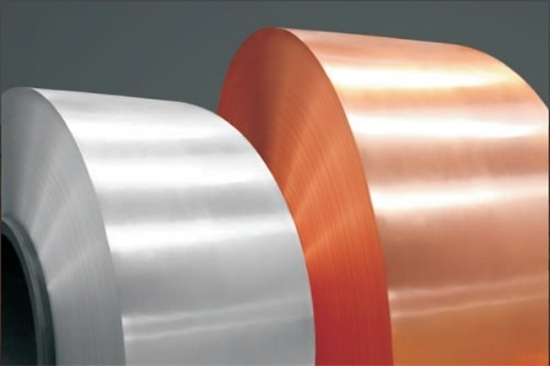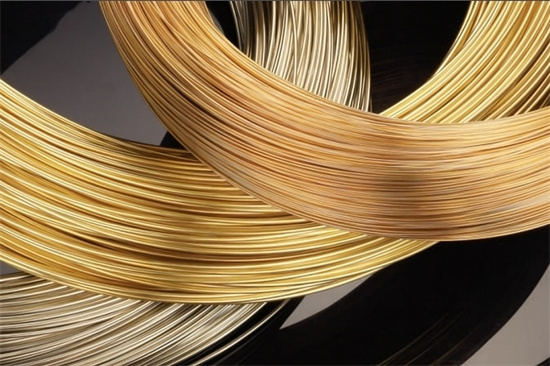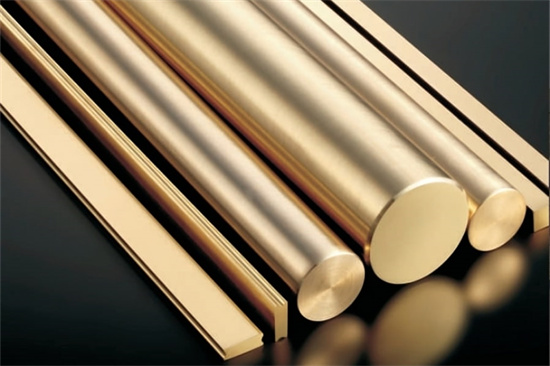


CuNiSi: The Essential Guide to This Breakthrough Copper-Nickel Alloy
Low MOQ
Provide low minimum order quantity to meet different needs.
OEM & ODM
Provide customized products and design services to meet unique customer needs.
Adequate Stock
Ensure fast order processing and provide reliable and efficient service.
Customer Satisfaction
Provide high quality products with customer satisfaction at the core.
share this article
Table of Contents
In the world of high-performance materials, CuNiSi (Copper-Nickel-Silicon alloy) stands out as an exceptional blend of strength, durability, and conductivity. Whether you’re working with electrical contacts, automotive parts, or even marine components, CuNiSi offers a combination of properties that make it the go-to choice for various demanding industries. But what exactly makes this alloy so special? And how do you know if it’s the right material for your project?
In this detailed guide, we’ll explore everything you need to know about CuNiSi, from its composition and mechanical properties to its most common applications and pricing. We’ll also dive into key comparisons with other alloys and answer some of the most frequently asked questions about the material. So, whether you’re a seasoned engineer or just someone curious about advanced materials, this guide will provide all the answers you need.
Overview
CuNiSi is a copper alloy primarily composed of nickel and silicon, offering a combination of high strength, good conductivity, and excellent corrosion resistance. The addition of nickel increases the alloy’s mechanical properties, while silicon helps to improve its hardness and thermal stability. This makes CuNiSi a preferred material in industries requiring both electrical conductivity and mechanical durability.
Key Features :
- High mechanical strength, ideal for components under stress.
- Excellent electrical conductivity, making it suitable for electronic components.
- Good corrosion resistance, particularly in marine and industrial environments.
- Thermal stability, allowing for use in high-temperature applications.
- Wear resistance, making it ideal for parts exposed to repetitive motion or friction.
Composition and Properties
The performance of CuNiSi is largely determined by its composition. The combination of copper, nickel, and silicon creates a material with a well-rounded set of mechanical and electrical properties.
CuNiSi Composition
| Element | Percentage (%) |
|---|---|
| Copper (Cu) | 94 – 96 |
| Nickel (Ni) | 2.0 – 3.0 |
| Silicon (Si) | 0.5 – 0.8 |
| Other Elements | Trace amounts |
- Copper (Cu): The base material, contributing to high electrical conductivity and thermal performance.
- Nickel (Ni): Enhances strength, wear resistance, and corrosion resistance.
- Silicon (Si): Improves hardness, strength, and thermal stability.
Mechanical and Physical Properties
| Property | Value |
|---|---|
| Tensile Strength | 500 – 800 MPa |
| Yield Strength | 250 – 400 MPa |
| Elongation | 10 – 20% |
| Hardness | 150 – 200 HV |
| Electrical Conductivity | 40 – 60% IACS (International Annealed Copper Standard) |
| Density | 8.8 g/cm³ |
| Thermal Conductivity | 180 – 220 W/mK |
| Corrosion Resistance | Excellent in marine environments |
How the Composition Affects Performance:
- High Strength: Nickel and silicon contribute to the alloy’s strength and hardness, making it capable of withstanding mechanical stress.
- Good Conductivity: While not as conductive as pure copper, CuNiSi retains a higher electrical conductivity than many high-strength alloys.
- Corrosion Resistance: CuNiSi performs exceptionally well in corrosive environments, particularly in marine settings where exposure to saltwater can be a concern.
Applications
Thanks to its unique combination of mechanical and electrical properties, CuNiSi is widely used across several industries where strength, durability, and conductivity are critical.
Common Applications
| Industry | Applications |
|---|---|
| Electronics | Connectors, relays, switches |
| Automotive | Electrical contacts, sensors, terminals |
| Marine | Corrosion-resistant components, valves |
| Aerospace | High-strength fasteners, connectors |
| Telecommunications | Signal connectors, RF components |
Why it Is Ideal for These Applications:
- Electronics: The high conductivity of CuNiSi makes it perfect for use in connectors and switches. These components need to maintain excellent performance over time, even after exposure to repetitive movements or heat.
- Automotive: CuNiSi is frequently used in electrical contacts and sensors. The alloy’s strength and corrosion resistance ensure reliability in harsh environments, such as under the hood of a car where vibration, heat, and chemicals are common.
- Marine: Given its resistance to corrosion, especially in saltwater environments, CuNiSi is an obvious choice for marine components like valves and fittings.
Specifications, Sizes, and Standards
When selecting CuNiSi for a particular application, it’s vital to understand the available sizes, specifications, and standards to ensure compatibility with your project.
Specifications and Sizes
| Specification | Details |
|---|---|
| Form | Wire, strip, rod, sheet, and foil |
| Available Thickness | 0.05 mm to 5 mm |
| Width Range | 1 mm to 200 mm |
| Length | Customizable based on requirements |
| Temper | Annealed, half-hard, full-hard |
| Standards | ASTM B422, EN 12163, JIS H3270 |
Grades
| Grade | Characteristics |
|---|---|
| CuNiSi Standard | Balanced properties, suitable for general use |
| CuNiSi High Strength | Higher mechanical strength for demanding applications |
| CuNiSi High Conductivity | Optimized for electrical applications with better conductivity |
Suppliers and Pricing
The cost of CuNiSi can vary depending on factors like form, grade, and quantity. Choosing the right supplier is crucial to ensure you receive high-quality material that adheres to industry standards.
Suppliers and Pricing Details
| Supplier | Location | Price Range (per kg) | Delivery Time |
|---|---|---|---|
| Global Metals Co. | USA | $30 – $45 | 1-2 weeks |
| Euro Copper Alloys | Europe | $28 – $42 | 2-3 weeks |
| AsiaMet Copper | China | $25 – $40 | 3-4 weeks |
| CopperTech International | India | $27 – $43 | 2-4 weeks |
| Superior Alloys Ltd. | UK | $32 – $48 | 1-2 weeks |
Factors Affecting Pricing:
- Quantity: Larger orders will typically result in a lower price per kilogram.
- Grade: High-strength or high-conductivity grades generally cost more than the standard CuNiSi.
- Location: Shipping costs and taxes can significantly impact the final price, especially for international deliveries.
Advantages and Limitations
Like any material, CuNiSi has its strengths and weaknesses. To help you decide if it’s the right material for your application, let’s break down the pros and cons.
Advantages and Limitations
| Advantages | Limitations |
|---|---|
| High mechanical strength and good conductivity | More expensive than standard copper alloys |
| Excellent corrosion resistance | Slightly lower conductivity compared to pure copper |
| Suitable for environments with high stress | Limited formability in harder tempers |
| Available in various customizable forms | Requires precise processing to maximize properties |
Is CuNiSi the Right Material for You?
If you’re looking for a material that offers a mix of strength, conductivity, and corrosion resistance, then it is worth considering. However, if cost or pure conductivity are your primary concerns, you may want to explore other options like pure copper or beryllium copper.
Comparing CuNiSi to Other Copper Alloys
To better understand whether CuNiSi is the best alloy for your needs, let’s compare it to other popular copper alloys such as C11000 (pure copper) and CuBe2 (beryllium copper).
CuNiSi vs. C11000 and CuBe2
| Property | CuNiSi | C11000 (Pure Copper) | CuBe2 (Beryllium Copper) |
|---|---|---|---|
| Tensile Strength | 500 – 800 MPa | 200 – 300 MPa | 800 – 1000 MPa |
| Yield Strength | 250 – 400 MPa | 70 – 100 MPa | 500 – 700 MPa |
| Electrical Conductivity | 40 – 60% IACS | 100% IACS | 20 – 30% IACS |
| Corrosion Resistance | Excellent | Moderate | Good |
| Cost | Moderate | Low | High |
| Applications | Connectors, relays, contacts | Electrical wiring, general use | High-load components, springs |
Key Takeaways:
- It offers significantly better strength than pure copper (C11000) while maintaining fairly high electrical conductivity.
- Compared to beryllium copper (CuBe2), CuNiSi has lower tensile strength but higher conductivity, making it more suitable for electrical components.
- Cost-wise, it is less expensive than beryllium copper, but more costly than pure copper.
Frequently Asked Questions (FAQ)
To help you get a clearer understanding of CuNiSi, we’ve compiled a list of some of the most frequently asked questions.
| Question | Answer |
|---|---|
| What is CuNiSi used for? | It is used in applications that require both mechanical strength and electrical conductivity, such as connectors and contacts. |
| Is CuNiSi suitable for marine environments? | Yes, it offers excellent corrosion resistance, making it ideal for use in marine applications. |
| How much does CuNiSi cost? | Prices typically range from $25 to $48 per kg, depending on the supplier and grade. |
| Can CuNiSi be used in high-temperature environments? | It can handle moderate to high temperatures, but for extreme conditions, other alloys might be more appropriate. |
| How does CuNiSi compare to pure copper? | It offers much higher strength than pure copper while retaining good electrical conductivity. |
| What forms is CuNiSi available in? | It is available as wire, strip, rod, sheet, and foil, making it versatile for various manufacturing needs. |
Conclusion
It is a high-performance copper alloy that combines strength, corrosion resistance, and good conductivity. Its unique combination of properties makes it ideal for demanding applications in industries such as electronics, automotive, and marine. While it may not offer the same level of conductivity as pure copper, its mechanical strength and durability make it a fantastic choice for components that need to withstand stress and corrosive environments.
So, is it right for your project? If your application requires a balance between strength and electrical conductivity, then the answer is likely yes.
Get Latest Price
About Met3DP
Product Category
HOT SALE
CONTACT US
Any questions? Send us message now! We’ll serve your request with a whole team after receiving your message.

Metal Powders for 3D Printing and Additive Manufacturing
COMPANY
PRODUCT
cONTACT INFO
- Qingdao City, Shandong, China
- [email protected]
- [email protected]
- +86 19116340731








